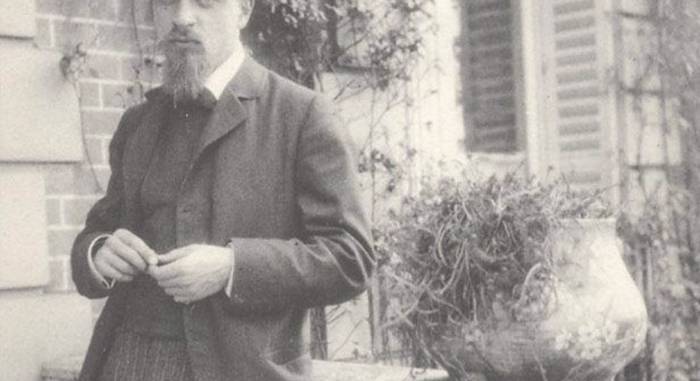Edgar Allen Poem Essay on Writing Process
Edgar Allan Poe's Seven Tips for Writing Stories and Poems
Sublimate
"The philosophy of composition" is a step-by-step explanation on how to achieve "unity of effect" in a story or narrative poem.
Poe's essays, as we have said in this blog, are enlightening. A wonderful way of finding out the meaning and ideas behind all of his work, it also makes great reading that flows through your hands gently before you suddenly realize you've finished it. In the case of this essay the pleasure goes hand in hand with a fundamental theme for all those who want to write or even understand the stories of one who is known as one of the universal masters of short stories.
In 'The Philosophy of Composition' Poe takes the time to explain step by step the elements that make up a good literary work. The essay delivers all that its title promises. This is where the taciturn writer gives us his theory on what literature is and what it does when it achieves what he calls the "unity of effect".
To illustrate what he means, Poe leads us through his poem 'The Raven' (taking for granted that all his readers have read it). Following is a summarized version of his recommendations for writing a good story or narrative poem.
1. Know the ending before beginning to write
Once writing commences, the author must keep the ending "constantly in view" in order to "give a plot its indispensable air of consequence" and inevitability.
2. Keep it short (the 'one-sitting' rule)
"If any literary work is too long to be read in one sitting, we must be content to dispense with the immensely important effect derivable from unity of impression." Force the reader to take a break, and "the affairs of the world interfere" and break the spell. This "limit of just one sitting" allows for exceptions, of course (or the novel would be disqualified from literature). But the one-sitting rule, he says, applies to any poem.
3. The choice of impression
Beforehand, the author should have "the choice of impression" that he wants to leave in the reader. This is the writer's skill over a reader's emotions.
4. Choose the tone of the work
As "beauty is the sole legitimate province of the poem, melancholy is thus the most legitimate of all poetical tones." Whichever tone one chooses, the preferred – and recommended – technique is that of refrain —a repeated "key-note" in word, phrase, or image that sustains the mood. In 'The Raven' the word 'nevermore' exercises that function, a word that Poe chose as much for its phonetics as for its conceptual qualities.
5. Determine the theme and characterization of the work
Unlike the methods of many writers, Poe moves from the abstract to the concrete and chooses characters as the mouthpieces for ideas. The important thing is to be clear where you move between.
6. Establish the climax
Poe recommends having a very clear place in which to gather the narrative threads to form a climax, and that the writing has its beginning at the end (as in 'The Raven')
7. Determine the location
Once you have decided why you want to put certain characters in their place, saying a certain thing, and once you have crystalized your idea and made a sketch of how to reach your climax, you can decide "to place the lover in his chamber… richly furnished." Reaching this at the end only suggests that the work itself will enable the writer to know how the space will look and how he should dress his character. "A close circumscription of space is absolutely necessary to the effect of insulated incident."
Image credit: Power of Words, by Antonio Litterio

7 Recommendations for Organizing Your Library
For the true bibliophile, few things are more important than finding a book from within your library.

Red tea, the best antioxidant beverage on earth
Red tea is considered to be the most unusual of teas because it implies a consistently different preparation process. ––It is believed that its finding came upon surprisingly when traditional green

A brief and fascinating tour of the world's sands
To see a World in a Grain of Sand And a Heaven in a Wild Flower, Hold Infinity in the palm of your hand And Eternity in an hour. - William Blake What are we standing on? The ground beneath our feet

Strengthen your memory with rosemary oil
For thousands of years rosemary oil has been traditionally admired and used due to its many properties. In the Roman culture, for example, it was used for several purposes, among them cleansing, as

Literature as a Tool to Build Realities
Alain de Botton argues that great writers are like lenses through which we can see an infinite array of possibilities.

Mandelbrot and Fractals: Different Ways of Perceiving Space
Mathematics has always placed a greater emphasis on algebra, a "purer" version of itself, one that is more rational at least. Perhaps like in philosophy, the use of a large number knotted concepts in

Luis Buñuel's Perfect Dry Martini
The drums of Calanda accompanied Luis Buñuel throughout his life. In his invaluable memoirs, published under the Buñuel-esque title, My Last Sigh, an entire chapter is dedicated to describing a

A Brief Manual of Skepticism, Courtesy of Carl Sagan
Whether or not you're dedicated to science, these tips to identify fallacies apply to any form of rigorous thinking.

How to Evolve from Sadness
Rainer Maria Rilke explored the possible transformations that sadness can trigger in human beings.

Alan Watts, A Discreet And Charming Philosopher Of The Spirit
British thinker Alan Watts was one of the most accessible and entertaining Western interpreters of Oriental philosophy there have been.
Edgar Allen Poem Essay on Writing Process
Source: https://www.faena.com/aleph/edgar-allan-poes-seven-tips-for-writing-stories-and-poems
Belum ada Komentar untuk "Edgar Allen Poem Essay on Writing Process"
Posting Komentar